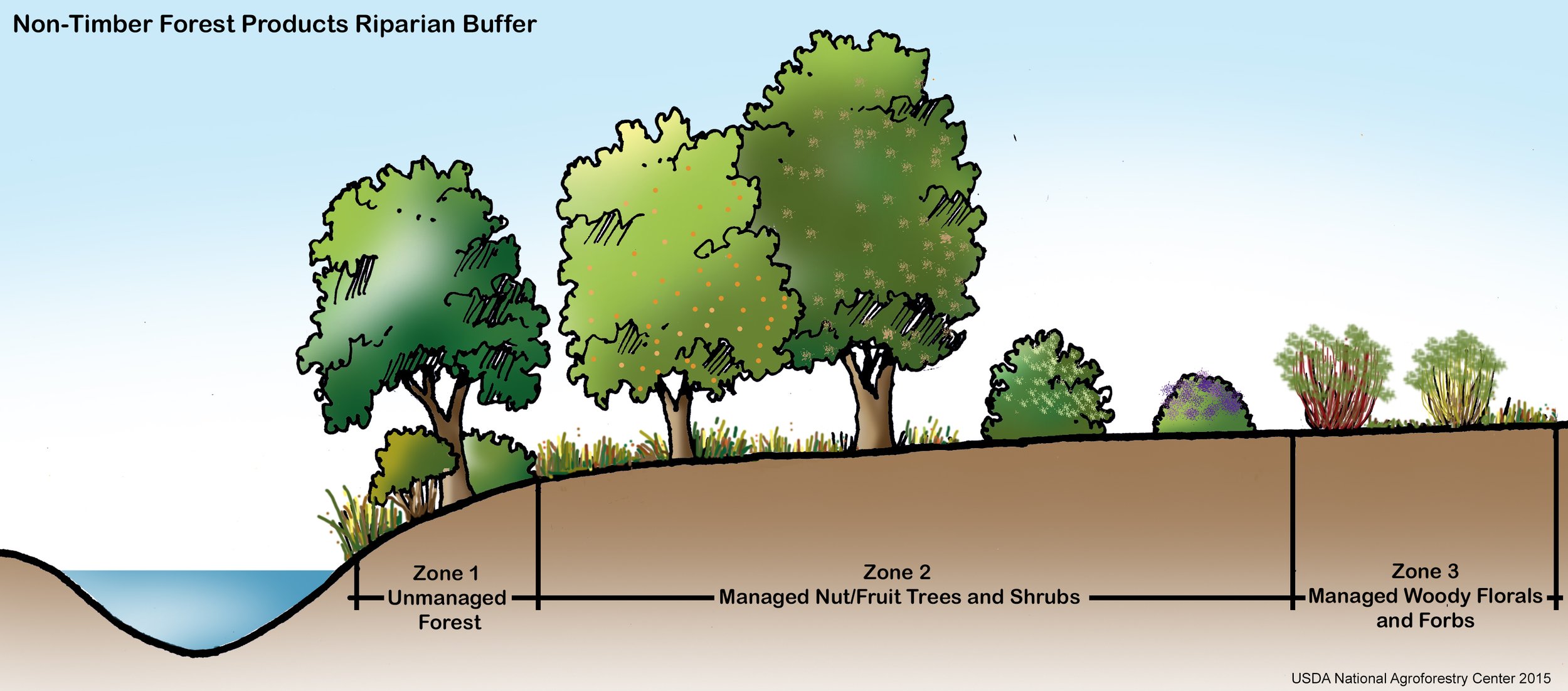Harvestable Riparian Buffers
/Nick Pate, owner of Raising Cane Ranch in Snohomish, has incorporated several agroforestry practices on his farm. His food forest (read more about it here) also serves as a harvestable, multi-functional, or working buffer. The trees and shrubs in the food forest essentially act as a second layer to his native forest riparian buffer, which borders the Snohomish River.
A riparian buffer is a vegetated area along a waterbody that filters pollutants from runoff, stabilizes banks, reduces flooding, shades water, improves wildlife habitat, and provides other conservation benefits. The main difference between the two buffers—besides the fact that they contain different species—is that Nick and his customers only harvest crops from the food forest.
Expand Income
Harvestable buffers allow farmers to expand an existing riparian buffer without losing farmable land and provide the opportunity to diversify income by growing multiple crops. Having access to additional markets can help farmers be more resilient to market fluctuations and crop failures.
Reduce Flooding and Erosion
Nick Pate has been a long-time partner with Snohomish Conservation District.
Nick’s food forest contains species that tolerate wet soil better than many annual crops, allowing him to produce income from marginal farmland. In addition, the food forest helps reduce the chance of flooding and erosion by absorbing water and holding soil in place. Erosion is reduced even further since the food forest doesn’t require tilling.
Natural Fertilizer and Pest Control
Harvestable buffers provide habitat for pollinators along with beneficial birds and insects that help manage pests, reducing the need for pesticides and herbicides. The diversity of plants supports a wide range of soil organisms that help fix nitrogen and improve soil fertility, reducing the need for fertilizer. Leaf litter also provides a natural soil amendment.
Win-Win for Farmers and Water Quality
Because the food forest needs less fertilizer and pesticides and doesn’t require tilling, it reduces labor and costs for Nick. That means fewer pollutants that could potentially reach the river. Plus, the trees and shrubs in the food forest provide an additional line of defense in filtering any contaminants from runoff.
Interested in learning more about harvestable buffers, food forests, or other agroforestry topics? Visit our Agroforestry program page or email agteam@snohomishcd.org.
Sign up for Farm & Forest, our new agroforestry newsletter!
This quarterly newsletter will highlight some of the amazing plants and latest trends in agroforestry. Create habitat for beneficial insects to promote pollination and natural pest control, provide shade for livestock, increase soil microbe diversity to improve soil health, grow new crops to diversify your income, and more!



